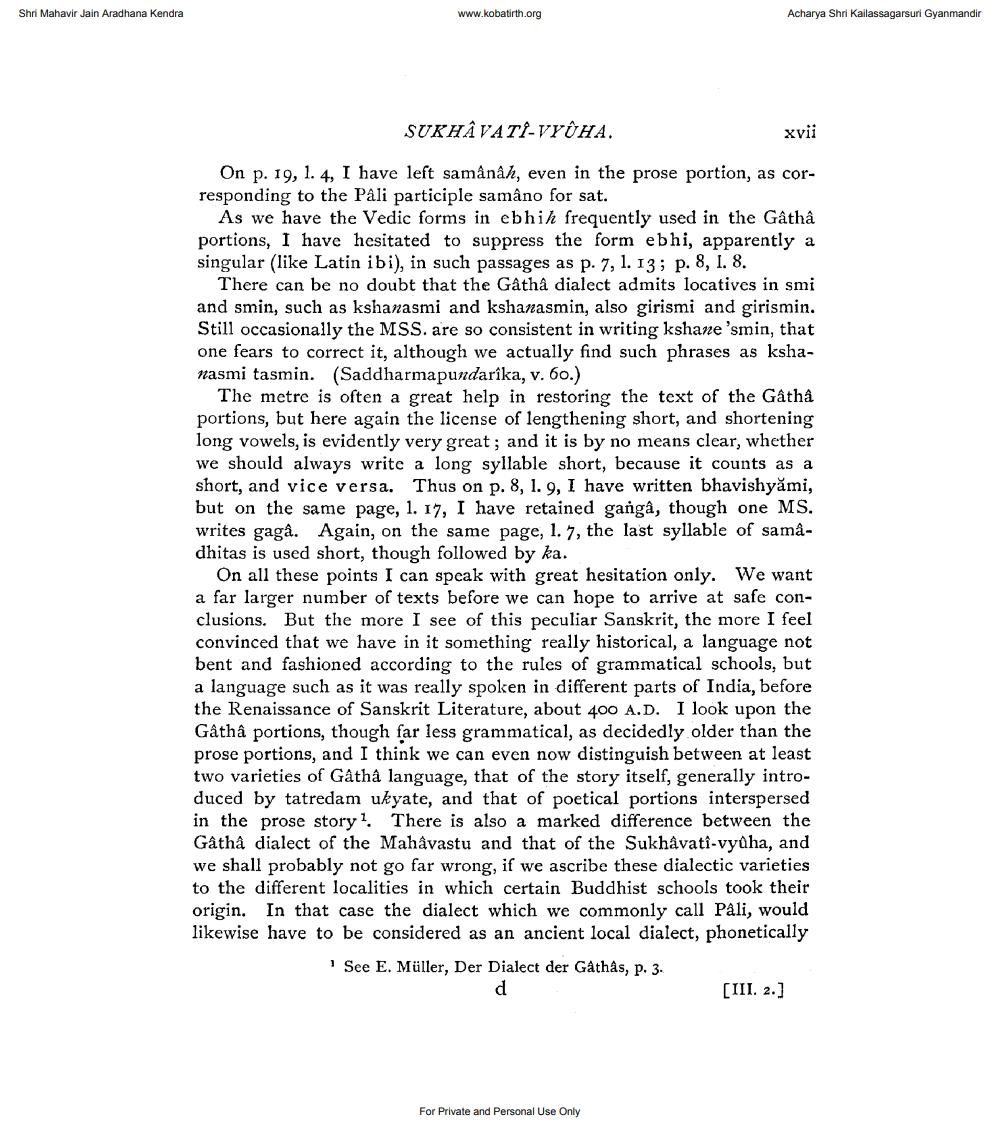________________
Shri Mahavir Jain Aradhana Kendra
www.kobatirth.org
Acharya Shri Kailassagarsuri Gyanmandir
SUKHÂVATI-VYÛHA.
xvii
On p. 19, 1.4, I have left samânâh, even in the prose portion, as corresponding to the Pali participle samâno for sat.
As we have the Vedic forms in ebhih frequently used in the Gâthâ portions, I have hesitated to suppress the form ebhi, apparently a singular (like Latin ibi), in such passages as p. 7, 1. 13; p. 8, I. 8.
There can be no doubt that the Gathå dialect admits locatives in smi and smin, such as kshanasmi and kshanasmin, also girismi and girismin. Still occasionally the MSS. are so consistent in writing kshane 'smin, that one fears to correct it, although we actually find such phrases as kshanasmi tasmin. (Saddharmapundarika, v. 6o.)
The metre is often a great help in restoring the text of the Gatha portions, but here again the license of lengthening short, and shortening long vowels, is evidently very great; and it is by no means clear, whether we should always write a long syllable short, because it counts as a short, and vice versa. Thus on p.8, 1. 9, I have written bhavishyami, but on the same page, 1. 17, I have retained ganga, though one MS. writes gaga. Again, on the same page, 1.7, the last syllable of samadhitas is used short, though followed by ka.
On all these points I can speak with great hesitation only. We want a far larger number of texts before we can hope to arrive at safe conclusions. But the more I see of this peculiar Sanskrit, the more I feel convinced that we have in it something really historical, a language not bent and fashioned according to the rules of grammatical schools, but a language such as it was really spoken in different parts of India, before the Renaissance of Sanskrit Literature, about 400 A.D. I look upon the Gåthå portions, though far less grammatical, as decidedly older than the prose portions, and I think we can even now distinguish between at least two varieties of Gatha language, that of the story itself, generally introduced by tatredam ukyate, and that of poetical portions interspersed in the prose story? There is also a marked difference between the Gåthå dialect of the Mahầvastu and that of the Sukhâvati-vydha, and we shall probably not go far wrong, if we ascribe these dialectic varieties to the different localities in which certain Buddhist schools took their origin. In that case the dialect which we commonly call Páli, would likewise have to be considered as an ancient local dialect, phonetically See E. Müller, Der Dialect der Gáthâs, p. 3.
[III. 2.)
For Private and Personal Use Only




